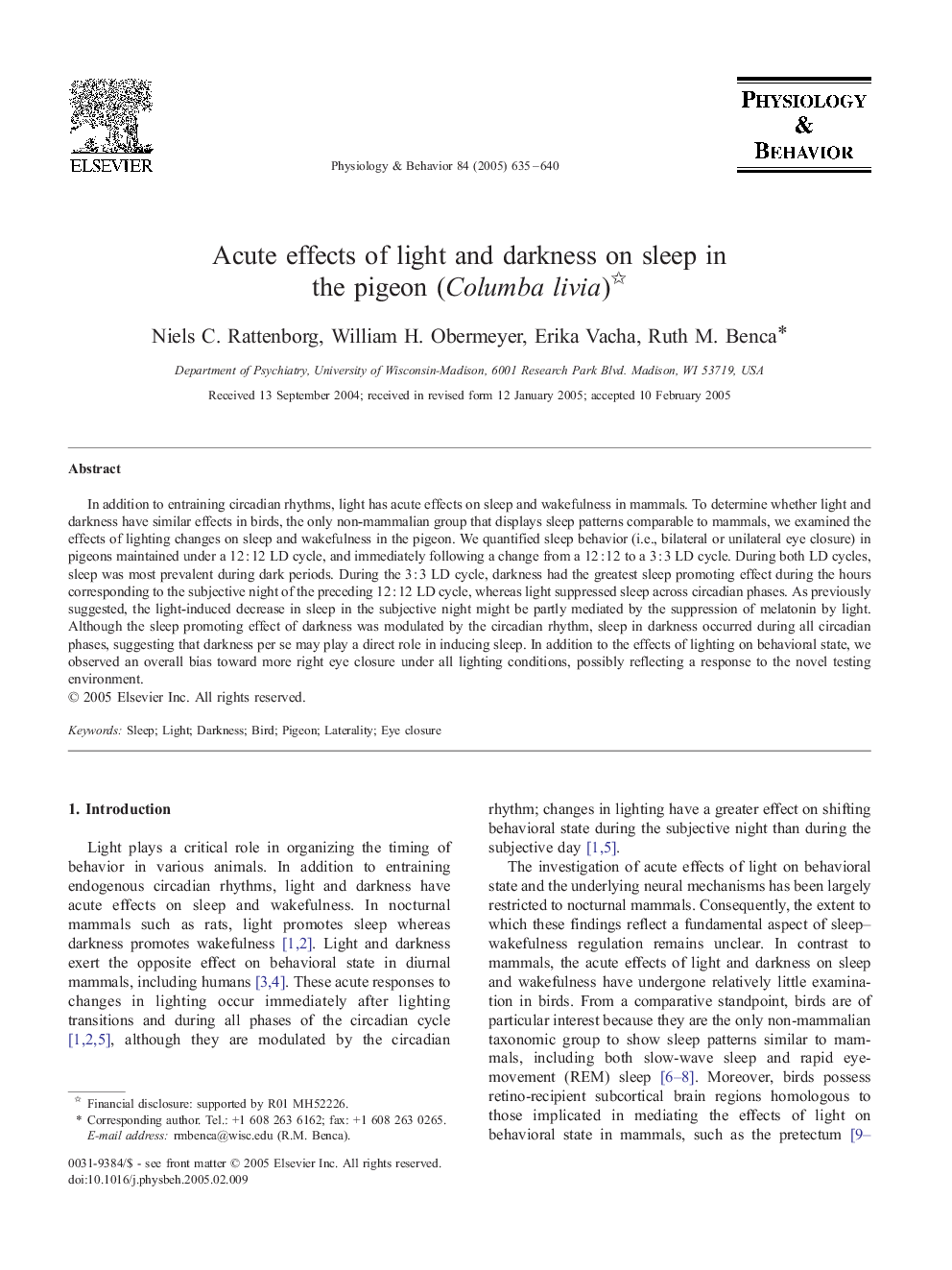| Article ID | Journal | Published Year | Pages | File Type |
|---|---|---|---|---|
| 9149684 | Physiology & Behavior | 2005 | 6 Pages |
Abstract
In addition to entraining circadian rhythms, light has acute effects on sleep and wakefulness in mammals. To determine whether light and darkness have similar effects in birds, the only non-mammalian group that displays sleep patterns comparable to mammals, we examined the effects of lighting changes on sleep and wakefulness in the pigeon. We quantified sleep behavior (i.e., bilateral or unilateral eye closure) in pigeons maintained under a 12Â :Â 12 LD cycle, and immediately following a change from a 12Â :Â 12 to a 3Â :Â 3 LD cycle. During both LD cycles, sleep was most prevalent during dark periods. During the 3Â :Â 3 LD cycle, darkness had the greatest sleep promoting effect during the hours corresponding to the subjective night of the preceding 12Â :Â 12 LD cycle, whereas light suppressed sleep across circadian phases. As previously suggested, the light-induced decrease in sleep in the subjective night might be partly mediated by the suppression of melatonin by light. Although the sleep promoting effect of darkness was modulated by the circadian rhythm, sleep in darkness occurred during all circadian phases, suggesting that darkness per se may play a direct role in inducing sleep. In addition to the effects of lighting on behavioral state, we observed an overall bias toward more right eye closure under all lighting conditions, possibly reflecting a response to the novel testing environment.
Related Topics
Life Sciences
Biochemistry, Genetics and Molecular Biology
Physiology
Authors
Niels C. Rattenborg, William H. Obermeyer, Erika Vacha, Ruth M. Benca,
